By Meara Khanna
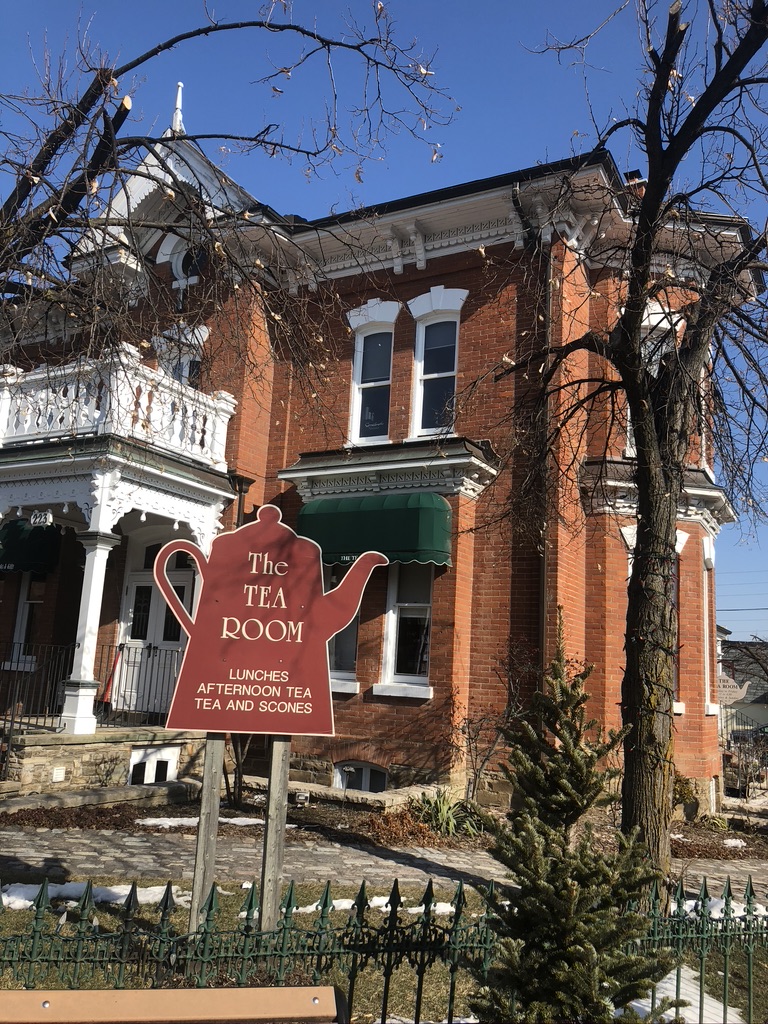
With a clink, a tea cup is set down. Classical music flows softly throughout the space. Delicate flutters of china tap each other; whether from the ‘cheers’ of glasses between diners or a spoon tapping excess sugar onto the small, accompanying saucer. The cheerful, soft voice of the front desk hostess is heard taking a reservation for the next day.
It’s almost time for high tea to commence at The Tea Room in Streetsville, Mississauga.
Streetsville is a quaint village tucked inside of Mississauga, but don’t let its quaintness fool you; the village is layered in rich history dating back to its 18th and 19th centuries, when British residents first settled in Canada. Although Streetsville and Mississauga are modernizing in the current millennium with its fast-growing population, the practices of The Tea Room honour its British history. Everyday, The Tea Room hosts a traditional high tea, reminding customers of the town’s roots before its current modernization.
The overall setting of the place is a perfect match for the historical building the business operates in. The Robinson-Bray House, built in 1885. has been well-preserved over the past 135 years.
This year marks the 30th anniversary of The Tea Room in this hallowed house.
What started as just a seating area in a small room at the back of the store in the ‘80s, has now taken off into a full-fledged high tea operation on the first floor of the Robinson-Bray House.
Nina Graham, the current manager of The Tea Room, prepares over a cup of Assam tea. The loose leaf tea steeps in a small, cream coloured and flower designed pitcher.
“Anyone who is from London or anywhere in the United Kingdom [that] is aware of the high tea or afternoon tea aspect, this is what they think of,” Graham says.
There were a few operators of The Tea Room prior to Graham. Rhonda Turner originally opened the room in 1989 as a modest establishment. Thirty years later, it has become a bustling business.
“And now, I’ve taken over the business on my own,” adds Graham.
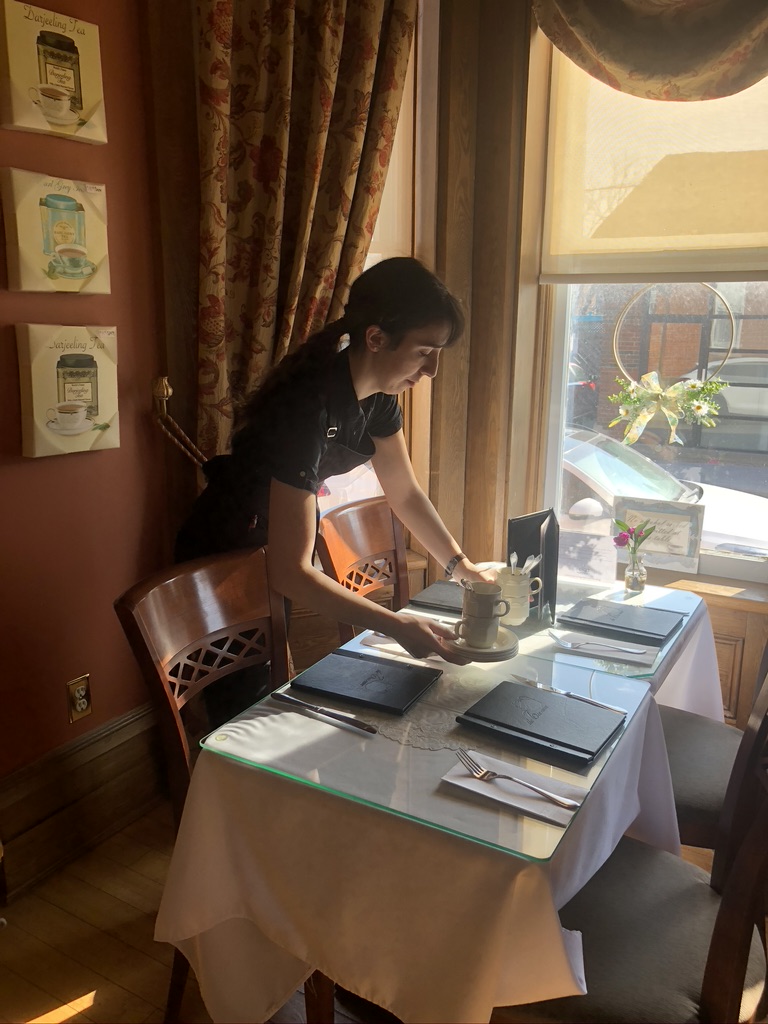
A server sets the table for the opening of The Tea Room, which is located in Streetsville’s historical Robinson-Bray House (Meara Khanna/T•). 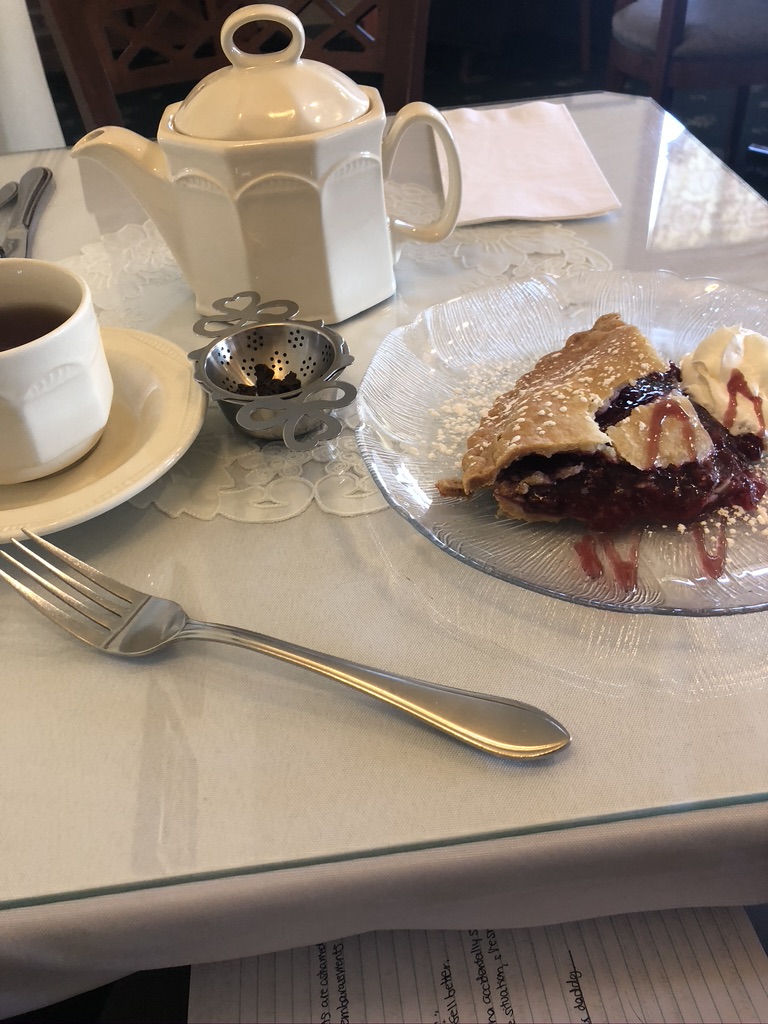
Tea time commences, at The Tea Room, with a raspberry pie, and Assam black tea. This was taken in March, at the Robinson-Bray House (Meara Khanna/T•). 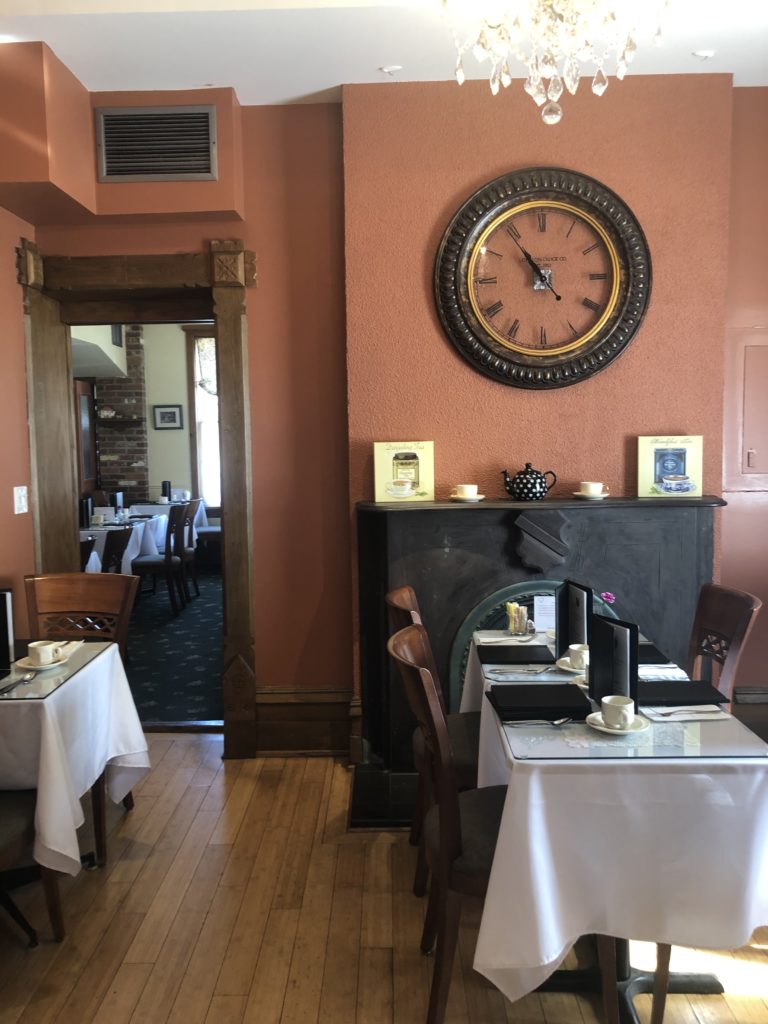
The main dining room at The Tea Room, located at Streetsville’s Historical Robinson-Bray House (Meara Khanna/T•).
This is not a grab-and-go beverage place. There’s no mobile app or general seating for the public, like in a Starbucks or Tim Hortons. Tea here is served deliberately in the traditional, British way. The Tea Room continues to cater to its customers as a tailored and specifically-themed experience.
“If you are somewhere in London, and you are walking around with your girlfriends, and you saw a tea shop, and wanted to go in for high tea and a little bit of a gab … you end up at The Tea Room,” Graham says. “We don’t try to be new, or modern. We just try to maintain our high quality of products.”
The products are in theme with traditional high tea. They offer over 20 types of loose leaf teas, finger sandwiches, scones and daily tarts (the selection changes everyday), along with light British-themed lunches like homemade crab cakes or minced beef pie with gravy. They even serve a quiche of the day, depending on what’s in house.
Everything is peppered with friendly conversation and vibrant colours, from the light coloured walls and vintage tea pictures, to the bright modern tea pitchers for sale at the exit of the Robinson-Bray House.
Historian Matthew Wilkinson, works with Heritage Mississauga to peel the layers of history throughout the area. The home’s “landmark” status in Streetsville recognizes the Queen St. South building’s connection to its history and heritage.
“It’s arguably the grandest prime residence ever,” says Wilkinson. “But in Streetsville.”
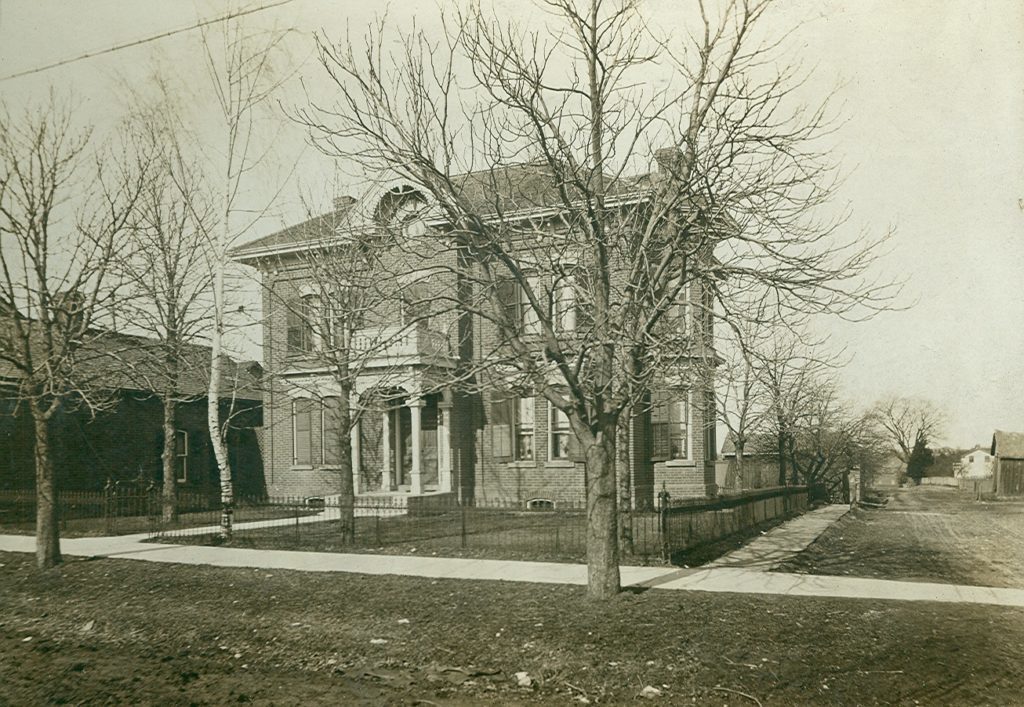
The house was first a personal home of the Robinson family in 1885, then shortly after, the Brays. Streetsville remained an independent municipality until 1974, which helped the house remain intact. The township was able to resist the pressure of change and growth that the rest of Mississauga was experiencing, according to Wilkinson.
But as Streetsville began to prosper and populate in the 1960s and ’70s, the demand for more houses increased.
Buildings, like the Robinson-Bray House, weren’t officially protected until 1975, when The Ontario Heritage Act was introduced by the province. The act seeks to preserve the heritage of Ontario, through protecting various archaeological sites and heritage buildings.
In many ways, the Robinson-Bray House was lucky to survive. According to Wilkinson, many of the buildings from the 19th and 20th centuries have either been gentrified or destroyed. This includes a number a new plazas at the north end of Streetsville, which currently feature a bowling alley, a Tim Hortons and a Shoppers Drug Mart.
“There was a stunning heritage estate there,” says Wilkinson. “That was torn down in the ‘60s.
“This is a community that has suffered loss,” adds Wilkinson. “Queen Street has really done a decent job – not a perfect job – but a decent one at protecting that heritage feel of the streetscape.”
Wilkinson also believes that connecting people to their heritage can connect them to their current community.
“To me, the value of history is the value of connecting to the place in which you live,” says Wilkinson. “If you get people to care about the place in which they live, you’re building citizens, you’re building a community and you’re building people that will build the city to the next generation.”
The historical appearance of Streetsville’s village continues to attract visitors. The town offers a sense of escape to a bygone era. It glimmers with preserved artifacts.
The women behind The Tea Room are doing their part to preserve the history as well. Every detail in The Tea Room remains steeped in tradition.
“It’s to maintain what these women have built throughout the years,” says Graham.
